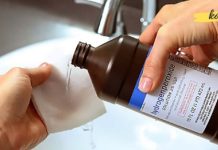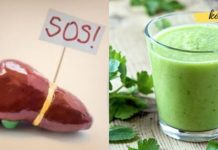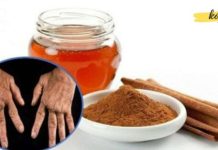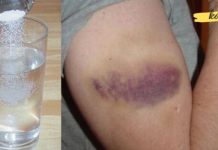How to Prevent Thrombophlebitis and Varicose Veins

Venous insufficiency and varicose veins are common health concerns, especially among middle-aged and older adults. While many view them primarily as a cosmetic issue—unsightly, bulging veins—they often cause more serious symptoms such as discomfort, pain, swelling, and a feeling of heaviness in the legs. Over time, the veins become enlarged, lose their elasticity, and can change shape permanently.
Even more serious is thrombophlebitis, an inflammatory condition in which blood clots form in veins, often in conjunction with varicose veins. This condition can lead to potentially life-threatening complications if left untreated. Most people are at risk of developing venous diseases due to their lifestyle or type of work. That’s why knowing how to prevent varicose veins and thrombophlebitis is essential for everyone, regardless of age or health status.
Common Causes of Varicose Veins and Thrombophlebitis
Several factors contribute to the development of varicose veins and thrombophlebitis, including:
Flat feet (fallen arches), which affect posture and blood flow in the legs
Poor bowel function, especially chronic constipation, which increases intra-abdominal pressure
Sedentary lifestyle, with little to no physical activity
Frequent heavy lifting or strenuous physical labor
Standing for long periods without adequate breaks (common among teachers, shop assistants, hairdressers, etc.)
Understanding these causes can help you take early preventative measures before symptoms appear.
A Natural Remedy: Horse Chestnut Tincture
One of the most well-known and widely used natural remedies for preventing and treating vein-related problems is horse chestnut tincture. This herbal remedy has been used in both traditional and folk medicine for centuries and is praised for its remarkable effects on circulatory health.
Why Horse Chestnut Works
Horse chestnut contains several powerful active compounds, including aescin, which has anti-inflammatory and vasoprotective properties. These compounds work together to:
Strengthen blood vessels
Reduce the permeability of capillaries
Improve venous circulation
Decrease blood viscosity (making blood less “sticky”)
Lower cholesterol levels
Reduce swelling and inflammation
Alleviate pain associated with venous disorders
Thanks to these effects, horse chestnut tincture acts as a natural protector of the circulatory system and helps prevent a wide range of vascular disorders.
Health Benefits of Horse Chestnut Tincture
This tincture is not only useful for varicose veins but also serves as a preventive remedy for thrombosis, particularly in post-operative recovery periods. It can also be beneficial when used in combination with other treatments for conditions such as:
Hemorrhoids
Prostatitis
Trophic ulcers
Leg edema caused by poor circulation
How to Prepare Horse Chestnut Tincture at Home
Traditional herbalists recommend using the brown outer shell (bark) of the horse chestnut to prepare the tincture. Here’s how to make it:
Ingredients:
50 grams of finely chopped horse chestnut bark
500 ml of high-quality vodka or alcohol (around 40% alcohol content)
Preparation:
Place the chopped bark into a glass jar or bottle.
Pour the alcohol over the bark, ensuring it’s fully submerged.
Seal the container tightly and store it in a cool, dark place for two weeks.
Shake the jar gently every couple of days to help extract the active compounds.
After two weeks, strain the liquid and discard the bark.
You now have a homemade horse chestnut tincture ready for use.
How to Use the Tincture
To benefit from the healing properties of horse chestnut:
Take 30 drops, three times per day, about 30 minutes before meals.
After one week, you can increase the dosage to four times daily.
Continue the treatment for up to six weeks, then take a break.
For long-term prevention or chronic cases, this regimen can be repeated a few times per year, always with breaks in between.
Important Precautions and Contraindications
As with any herbal remedy, horse chestnut tincture comes with certain precautions. Despite its many benefits, it should not be used in the following situations:
People with acute gastritis or stomach ulcers
Individuals suffering from atonic constipation
Those with kidney or liver diseases
Pregnant women, nursing mothers, or women with menstrual irregularities
It is essential to consult a healthcare provider before starting this or any other herbal remedy, especially if you are taking medications or have underlying health conditions. While natural, horse chestnut is a potent plant and should be treated with the same respect as pharmaceutical drugs.
Additional Tips to Prevent Varicose Veins and Thrombophlebitis
Along with natural remedies like horse chestnut tincture, here are some additional lifestyle changes that can help you maintain healthy veins:
Stay active – Walking, swimming, cycling, and yoga improve circulation.
Elevate your legs – Especially after long hours of standing or sitting.
Avoid tight clothing – Especially around the waist, groin, and legs.
Wear compression stockings – These can help support blood flow in the legs.
Maintain a healthy weight – Excess weight puts pressure on your veins.
Stay hydrated and eat fiber-rich foods – To prevent constipation, which can worsen vein problems.
Avoid long periods of immobility – Get up and move regularly, especially during long travel or desk work.
Final Thoughts
Preventing thrombophlebitis and varicose veins is entirely possible with the right knowledge, consistent habits, and effective natural remedies. Horse chestnut tincture stands out as one of the best-known and most effective herbal treatments for improving venous circulation, reducing inflammation, and protecting against blood clot formation.
By taking proactive steps—both with lifestyle changes and natural remedies—you can protect your vascular health, avoid painful complications, and enjoy stronger, healthier legs for years to come.












